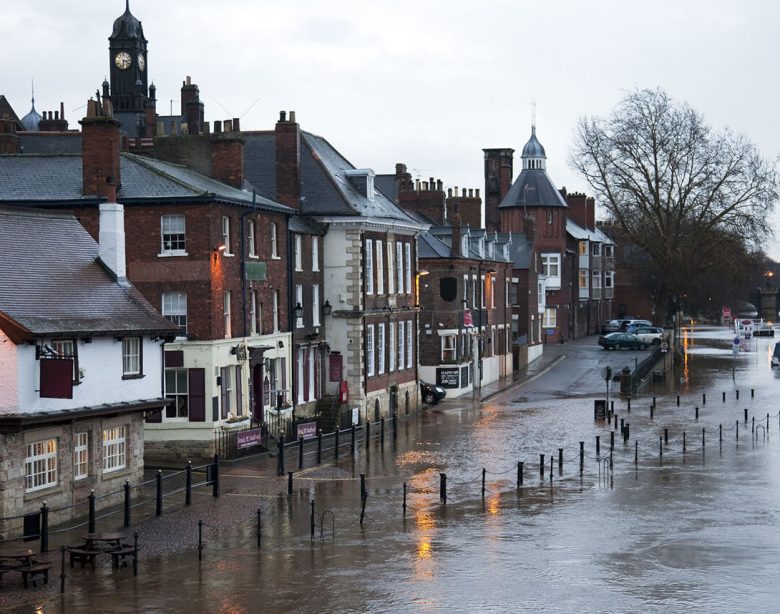Most scientists agree that global warming and climate change are creating more intense thunderstorms, hurricanes and tornados. In fact, based on current climate models, experts have concluded that typhoons will increase by 60 percent by the year 2100.
These statistics and studies, therefore, reveal how important it is to protect your rental property during powerful storms. So, here is a guide to help you know what to do in case of a thunderstorm.
Watch and Check the Weather
 In general, the weather has certain patterns which make it somewhat predictable and facilitates the job of meteorologists. However, weather forecasts can only be right about half the time as there are lots of factors that can affect weather like air pressure, temperature, precipitation, cloud patterns, direction and speed of the wind. This means that a small change in the overall system of the atmosphere in a particular location can affect the weather in that area. In fact, a recent study by Stanford University revealed how increasing temperatures could intensify the unpredictability of weather in Earth’s mid-latitudes. Therefore, due to the unpredictable nature of weather, landlords should always be aware of weather conditions.
In general, the weather has certain patterns which make it somewhat predictable and facilitates the job of meteorologists. However, weather forecasts can only be right about half the time as there are lots of factors that can affect weather like air pressure, temperature, precipitation, cloud patterns, direction and speed of the wind. This means that a small change in the overall system of the atmosphere in a particular location can affect the weather in that area. In fact, a recent study by Stanford University revealed how increasing temperatures could intensify the unpredictability of weather in Earth’s mid-latitudes. Therefore, due to the unpredictable nature of weather, landlords should always be aware of weather conditions.
In some countries, for example, summer is associated with storms and during these periods, landlords are encouraged to stay updated about the weather. In the UK, summer is usually very hot and dry. The average temperature ranges from 9-18 degree Celsius and at times, it can even reach around 30 degrees Celsius. As a result, the high temperatures, in conjunction with the high humidity, create huge amounts of warm and moist air rising into the atmosphere and forming thunderstorms. February, for instance, is known as the peak month for storm damage in the UK and therefore, during that month, landlords should watch or listen to the weather forecast every day.
In addition, with the “Storm Naming” campaign, people are more aware about approaching storms and can be better prepared.
Communicate with Tenants
 Most landlords probably do not communicate with their tenants on a regular basis, but landlord-tenant communication is a vital part of property management during severe weather.
Most landlords probably do not communicate with their tenants on a regular basis, but landlord-tenant communication is a vital part of property management during severe weather.
Weather forecasting is a tricky task, but in some countries, experts strive to do the best they can and can predict the path of severe storms for 3-5 days in advance. When such weather information is issued to the public, landlords should contact their tenants. Ideally, you can communicate through phone calls, text messages, emails or even on social media platforms.
As a landlord, you have certain duties of care toward your tenants. During such circumstances, you should reach out to your tenants and empathize with them. Ask them if they have any concerns or issues regarding the imminent storm. Emergency numbers should be shared with them. It is also important to advise them on what and what not to do during a storm. Here is a detailed guide of what to do and what to avoid in the event of a storm.
When a hurricane or thunderstorm is predicted, you may want to visit your rental property to help the tenants make emergency preparations. Before visiting the property, however, you should give a 24 hours notice to your tenants. Once access is granted, you can visit the property and help your tenants identify things that they have to secure or put away if strong winds or stormy weather is predicted.
Preparing Your Rental Property for a Storm
 According to the National Oceanic and Atmospheric Administration (NOAA), between 2017 and 2021, severe weather conditions have resulted in $121.4 billion in property damage in the USA. Further studies revealed that flash floods were the biggest cause of weather-related property damage. Another study showed how during a certain period, flash floods resulted in $49.1 billion in property damage.
According to the National Oceanic and Atmospheric Administration (NOAA), between 2017 and 2021, severe weather conditions have resulted in $121.4 billion in property damage in the USA. Further studies revealed that flash floods were the biggest cause of weather-related property damage. Another study showed how during a certain period, flash floods resulted in $49.1 billion in property damage.
However, if landlords follow the steps below and prepare their rental property for severe weather, they won’t have to suffer the consequences of weather-related property damage.
- Gutters, downspouts and drains should be cleared of debris.
- All low-hanging or loose tree branches should be cut off. Dead trees should be removed before severe weather hits.
- The roof should be inspected and loose, cracked or broken roof slates should be repaired or replaced.
- Check that windows and doors are secure and watertight.
- Fences should be secured.



